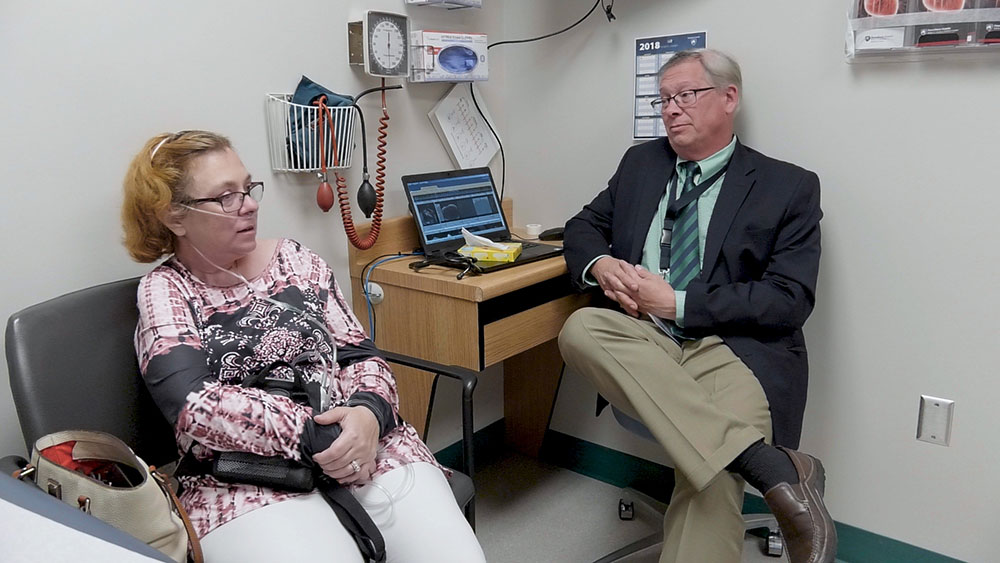Custom made for her

Denise Brown is no stranger to adversity. Incredibly, she battled four types of cancer by the time she turned 3 years old.
Her latest triumph is overcoming life-threatening heart valve surgery, which, she says, is thanks to God-and this time-to Dr. John Conte, program director, cardiac surgery at Penn State Health Milton S. Hershey Medical Center.
“I kind of felt like I was unworthy,” said the 49-year-old New Jersey resident. “I said ‘Why me?’ He said, ‘You can’t live without it.’ I felt like a princess getting her pony for the first time.”
Because existing valve options wouldn’t fit Brown’s underdeveloped left ventricle, scarred from radiation, Conte sought special permission from the U.S. Food and Drug Administration (FDA) to reconfigure an old device. Next, he approached the Milton S. Hershey Medical Center’s Division of Applied Biomedical Engineering to produce it.
“I’ve told Dr. Conte many times that he saved my life,” Brown said. “I don’t know many doctors that would have made something for somebody they don’t even know, let alone such a high-risk patient. He was the answer to my prayers.”
Her childhood cancers have haunted her life in many ways-from the taunts of other children and feelings of inferiority to physical ailments that curtailed her plans and dreams.
“I was in and out of the hospital constantly for the first six years of my life,” Brown said. “Every week I was having chemo, radiation or cobalt treatments.”
Those six years of treatments scarred her heart valves, compromised her lungs and led to advanced coronary disease, as well as disease of her aorta and blood vessels leading to her brain.
In 2011, she was diagnosed with aortic stenosis, a narrowing of the aortic valve. That’s a problem because the aorta is the main artery that carries blood to the rest of the body.
After several years of seeing doctors at various medical centers for valve replacement evaluations, Brown met Conte at Johns Hopkins in Baltimore in 2016. Remembering the surgeries he did before transcatheter valves took their place, Conte began looking worldwide for an apical connector he thought would work but wasn’t made anymore. Shortly after that, Conte left for Hershey Medical Center, and-desperate for help-Brown followed him.
“He was the only doctor who knew my situation and was willing to do what it took to help me,” Brown said. “I trusted him because he knew what size valve I needed and how sensitive the surgery was going to be.”
Read the complete article on Penn State Medicine.
If you're having trouble accessing this content, or would like it in another format, please email Penn State Health Marketing & Communications.
